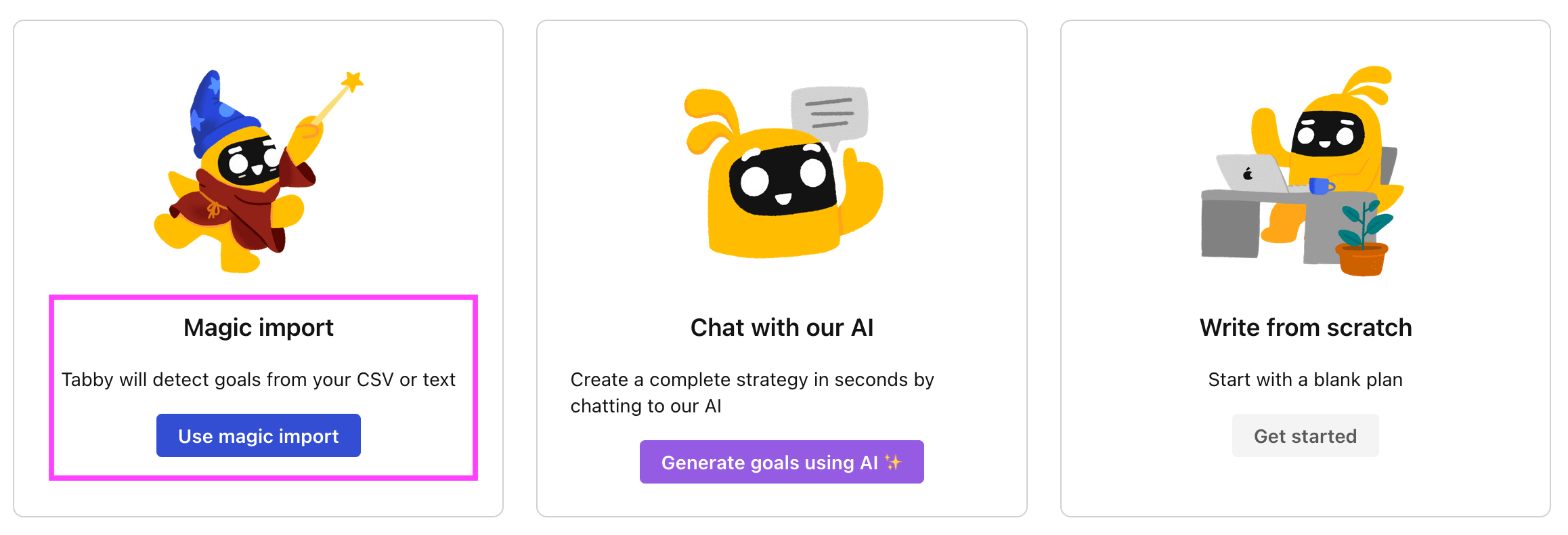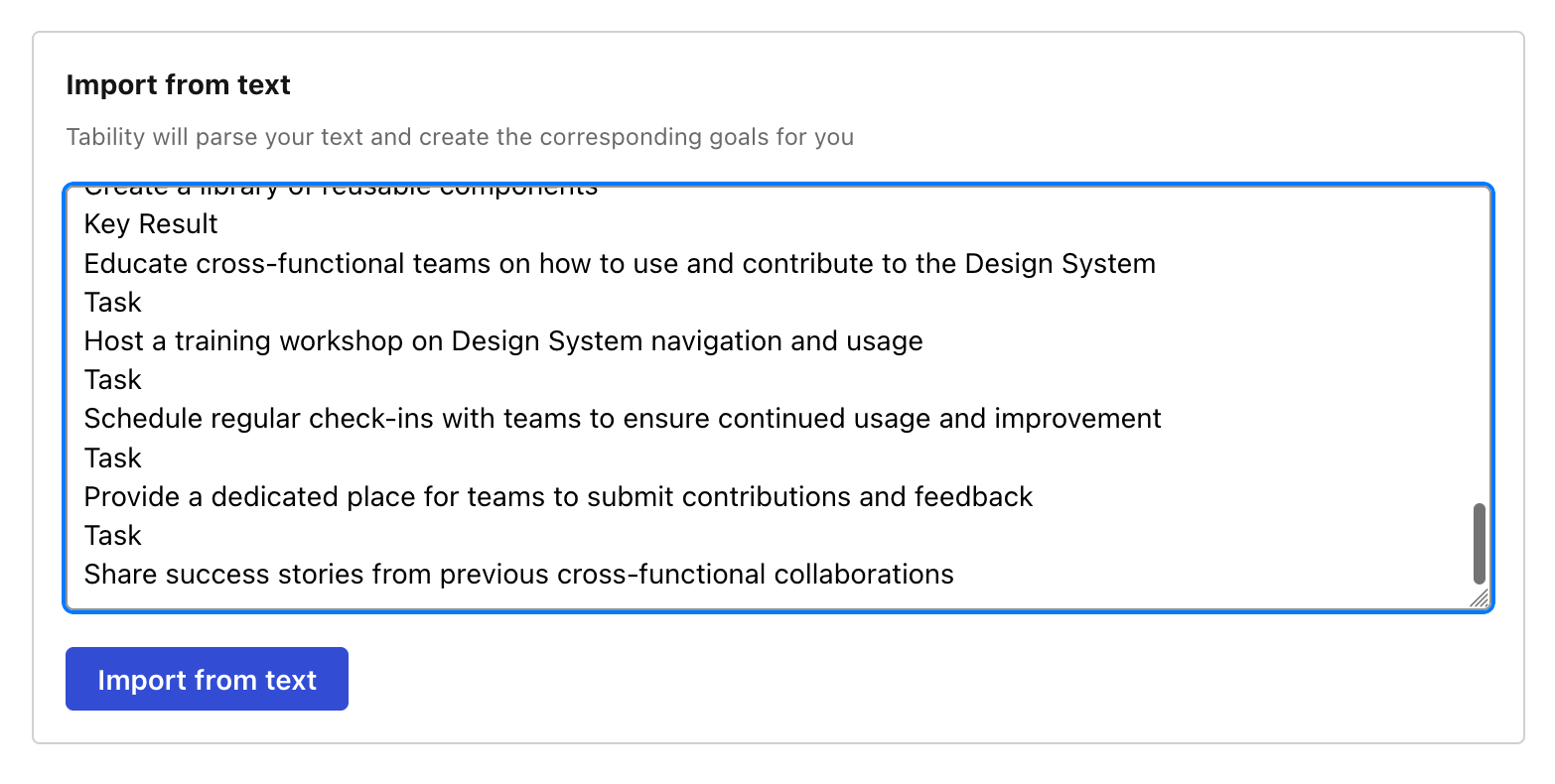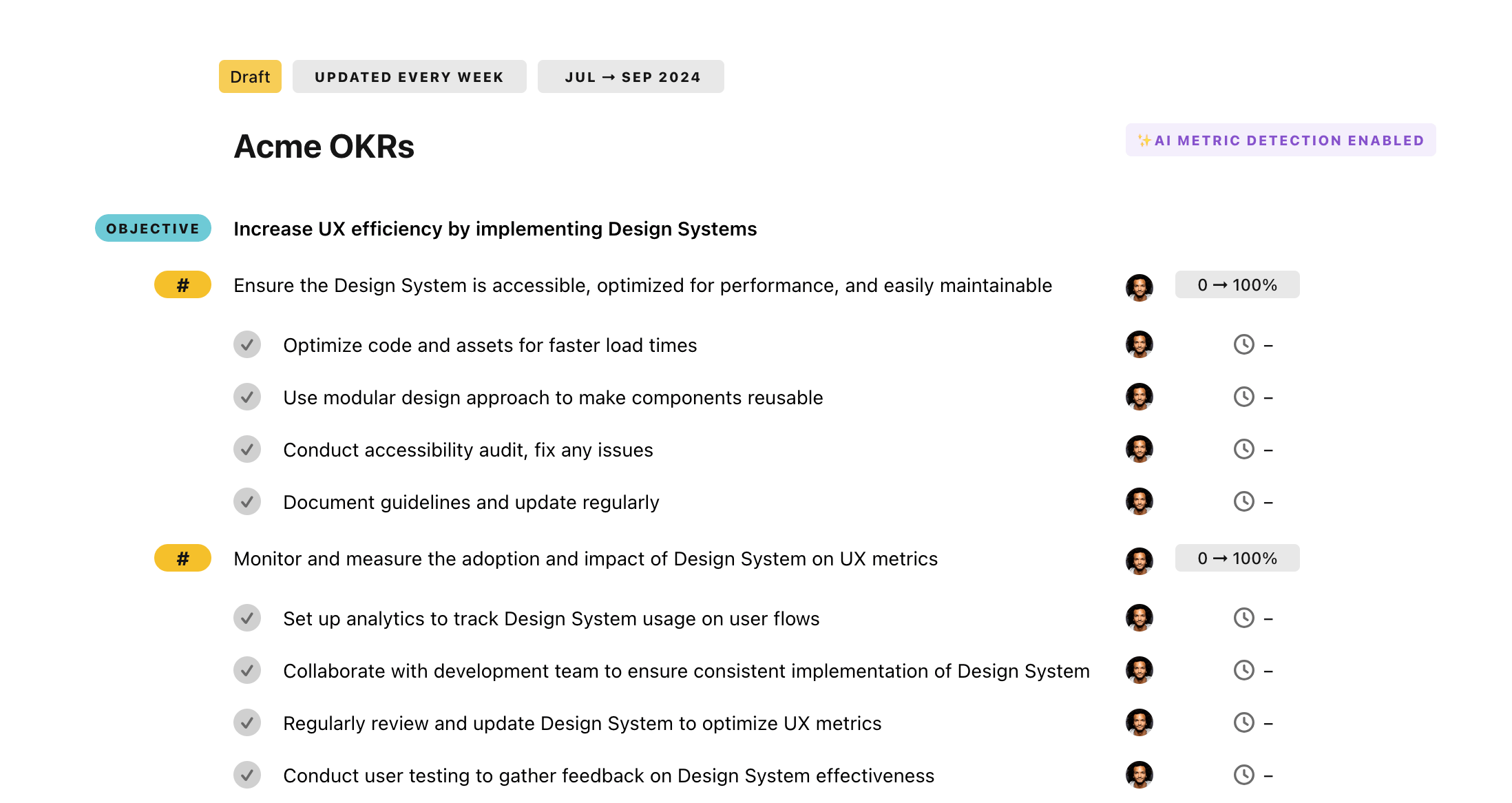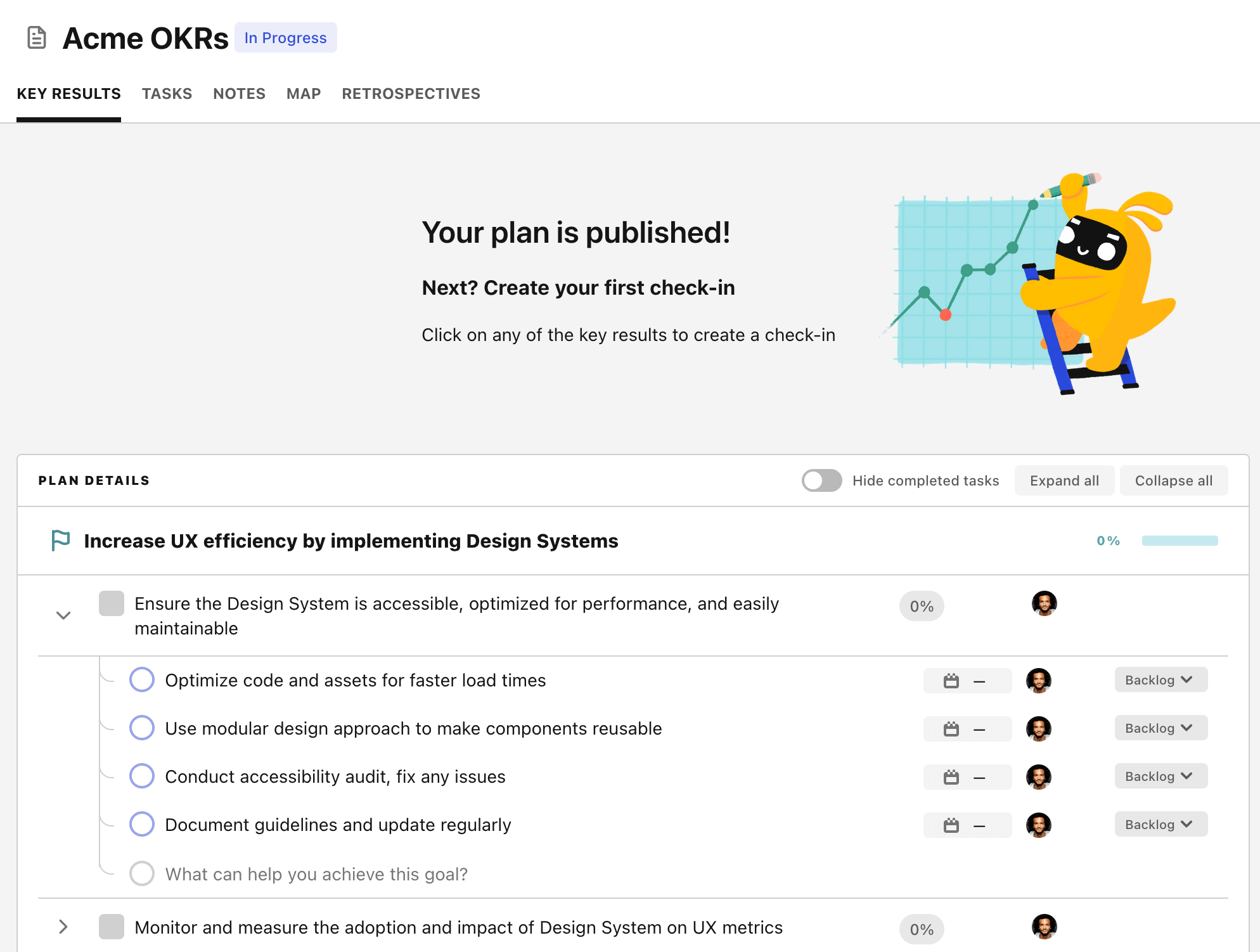OKR template to enhance work productivity consistency within the team
Your OKR template
The second aspect of this OKR is to develop and implement tailored training programs for each team member by the end of the second month. The training initiatives are designed to address specific needs and will be initiated once each individual's unique training requirements have been identified.
A third sub-objective is to conduct individual employee skill-assessment tests by the end of the first month. This is an essential step towards understanding the unique needs and capabilities of each team member and will ensure that training and efficiency measures are targeted effectively.
All these objectives are designed to work synergistically to help achieve overall enhancement in work productivity consistency within the team, ensuring a better-performing, more cohesive unit that is in sync with the company's objectives and direction.
ObjectiveEnhance work productivity consistency within the team
KRAchieve 20% reduction in productivity variance across the team by the third month
Identify factors causing productivity variance
Implement productivity tracking tools
Develop efficiency training program
KRImplement tailored training programs for each team member by second month
Develop customized training programs addressing specific needs
Initiate implementation of the tailored training for each member
Identify the unique training needs of every team member
KRConduct individual employee skill-assessment tests by end of first month
Schedule testing times with all employees
Identify relevant skill-assessment tests for each role
Evaluate and record test results
How to edit and track OKRs with Tability
You'll probably want to edit the examples in this post, and Tability is the perfect tool for it.
Tability is an AI-powered platform that helps teams set better goals, monitor execution, and get help to achieve their objectives faster.
With Tability you can:
- Use AI to draft a complete set of OKRs in seconds
- Connect your OKRs and team goals to your project
- Automate reporting with integrations and built-in dashboard
Instead of having to copy the content of the OKR examples in a doc or spreadsheet, you can use Tability’s magic importer to start using any of the examples in this page.
The import process can be done in seconds, allowing you to edit OKRs directly in a platform that knows how to manage and track goals.
Step 1. Sign up for a free Tability account
Go tohttps://tability.app/signup and create your account (it's free!)
Step 2. Create a plan
Follow the steps after your onboarding to create your first plan, you should get to a page that looks like the picture below.

Step 3. Use the magic importer
Click on Use magic import to open up the Magic Import modal.
Now, go back to the OKR examples, and click on Copy on the example that you’d like to use.

Paste the content in the text import section. Don’t worry about the formatting, Tability’s AI will be able to parse it!

Now, just click on Import from text and let the magic happen.

Once your example is in the plan editor, you will be able to:
- Edit the objectives, key results, and tasks
- Click on the target 0 → 100% to set better target
- Use the tips and the AI to refine your goals
Step 4. Publish your plan
Once you’re done editing, you can publish your plan to switch to the goal-tracking mode.

From there you will have access to all the features that will help you and your team save hours with OKR reporting.
- 10+ built-in dashboards to visualise progress on your goals
- Weekly reminders, data connectors, and smart notifications
- 9 views to map OKRs to strategic projects
- Strategy map to align teams at scale